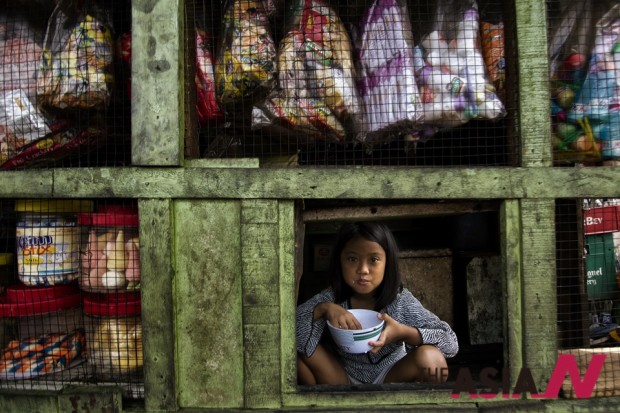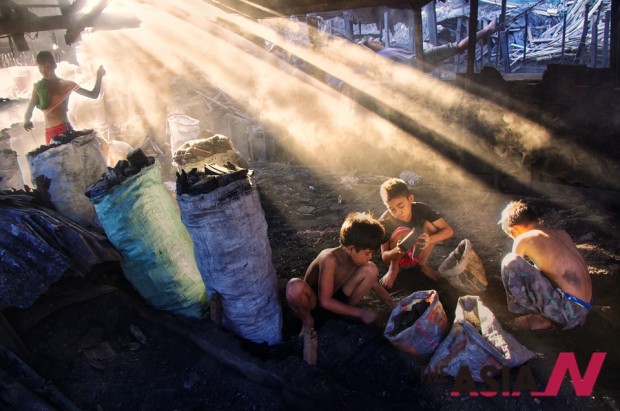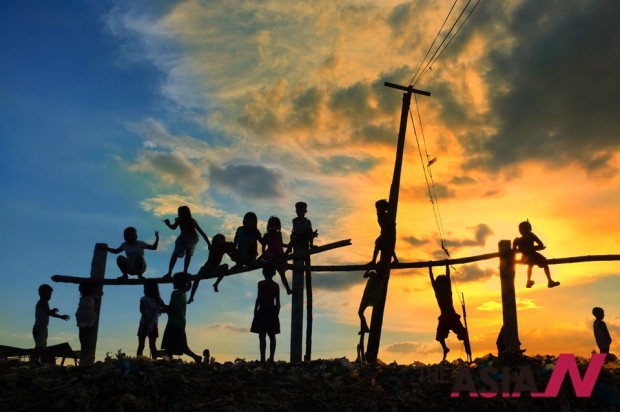[어린이날 특별인터뷰] 전세계 고통받는 어린이 담는 인도주의 사진작가 토마스 키트

* ‘아시아엔’ 연수기자의 한글요약본과 원문을 함께 게재합니다.
[아시아엔=라훌 아이자즈 기자·번역 최정아 기자] 싱가포르에 거주하고 있는 말레이시아 출신 사진작가 토마스 탐 주 키트(Thomas Tham Joo Kit, 이하 토마스)는 아시아 4개 NGO에서 자문위원으로 활동하고 있다. 그는 장애인을 위한 인프라 구축에 힘쓰고 있으며, 이들의 원활한 사회활동을 위한 교육프로그램에 참여하고 있다. 이뿐만이 아니다. NGO간 교류를 강화하는 ‘다리’ 역할을 하고 있는 그는 싱가포르 단체 ‘The Photographic Society’에서 인정받는 사진 강사이기도 하다.
토마스가 사진을 접한 계기는 특별하다. 장애인들, 특히 장애를 가진 고아들의 이야기를 세상에 전하기 위해 ‘사진’을 찍게 됐다고 한다. 인도주의 사진작가 토마스는 세계 곳곳에서 고통 받고 있는 아이들의 실상을 알리기 위해 지금까지 활동해왔다. 그는 어린이들이 우리의 미래라고 굳게 믿고 있다.
토마스는 매우 거칠고 직설적이지만 진실된 시선으로 그의 ‘친구들’을 세상에 선보인다. 그는 또한 ‘피사체’(subject)란 말을 좋아하지 않는다. 대신 수년동안 아이들과 함께하며 쌓아온 신뢰를 바탕으로, 마음과 진심을 담아 작품을 완성시킨다. 토마스의 작품을 본 사람들이 그 이미지를 오랫동안 기억하며 함께하는 이유도 이 때문이다.
주로 인도네시아, 필리핀, 캄보디아의 어린이들을 촬영해 온 토마스는 불평등과 부조리가 존재하는 곳이라면 어디든 달려갈 준비가 돼 있다. 그는 “아이들이 진정으로 필요로 하는 것이 무엇인지 파악하고, 아이들을 이해하기 위해 수년간 함께 지내기도 한다”고 말한다.
토마스는 그가 속한 NGO 중 하나인 ‘Empowering Lives Asia’(ELA)에 대해 “ELA는 마음이 따뜻하고 능력 있는 사람들이 더 좋은 세상을 만들기 위한 모임”이라고 설명한다. ELA의 목표는 정성을 다하는 마음으로 혜택 받지 못한 어린이들에게 힘을 주는 것이다. 이를 실현시키기 위해 ELA는 이들을 도울 프로그램을 운영하고 있다.
지금도 전세계의 많은 어린이들이 열악한 환경에서 최저임금도 받지 못한 채 노동착취를 당하고 있다. 학업을 위해 생계전선에 뛰어든 어린이와 청소년들도 수두룩하며, 심지어 거리의 아이들은 마약조직에 연루되기까지 한다.
부당하게 착취당하는 아이들을 구해내고, 빈곤으로 힘겨워하는 가정을 돕기 위해선 경제적인 지원도 뒷받침 돼야 한다. 이에 대해 토마스는 “자기 이익보단 이웃을 위해 나눌 자세가 있는 한, ELA는 더욱 발전할 것이다. 우리는 어려운 이웃들과 함께 그 길을 걸어갈 것이다”라고 말했다.
Empowering Lives through Photography
Interview with Thomas Tham, Malaysian photographer
Thomas Tham Joo Kit is a Malaysian photographer residing in Singapore. A volunteer consultant to 4 NGOs located in Asia, Thomas steps forward to help in building better life for the disadvantaged people. He is involved in infrastructure, social and life skill programs and connecting NGOs to galvanize and share resources from each other. He is also an accredited photography instructor with The Photographic Society of Singapore.
I have never personally met Thomas, but we connected through Facebook during a photography venture called Platform, organized by a group of Singaporean photographers. That was in 2012. I had just started photography and was dissatisfied with the mindless shallow photographic work I was coming across by my peers in Pakistan: Photographs with glamor and good-looking frames but no storytelling. Thomas and I started conversing about the idea and the purpose of photography. Being a master storyteller that he is, he taught me photography is a lot more than mere beautiful looking frames.
Today, after about four years, the idea of interviewing Thomas occurred to me. Not because I have something to offer to him by doing this, but because the message he conveys is undeniable in its true essence: of helping others and spreading love and humanity.
What started as a hobby for him, became a medium with a sole purpose to help and tell the stories of disadvantaged people, especially the children who have been abandoned. As a humanitarian, photographer and a teacher in photography, Thomas aims to bring about awareness of suffering children to the world and in turn better their lives, for he believes that children today are our future.
His photographs have a harsh, direct approach to show his ‘friends’ (he hates the term ‘subject’ as he spends years with them and gains their trust, to be able to truly project their cause). The images stay with you long after you see them.
Here, Thomas talks to Magazine N and explains his photographic journey and his large family of children whom he has photographed and supported in countries like the Philippines, Cambodia, etc.
How do you use photography to help the children in impoverished conditions?
“Very often words are not enough to represent the emotional state of a person, especially children where they have so many expressions that often reflect their plight of the moment. Photography is an effective way that I could use to capture the moment of truth about children and unfold them to the world. I could document their feelings relating to the impoverished conditions. Sometimes, I capture the moment of injustice but often there is hope, joy and strength in what I record. There are many non-verbal cues that could not be described by words but images.”
When did you start or realize that the visual medium can be used to benefit the poor?
“A good image would capture the attention of the audiences immediately. The audiences may like or dislike it, but the images have already been implanted in their hearts and minds. There is no way they could forget them. That is the power of the visual medium.”
Is your stance on your work affected by your history and past struggles? How was it like growing up for you?
“Childhood experiences, good or bad do contribute to my level of sensitivity and understanding while capturing the stories about children. I have become very accustomed to hazardous environments and often feel at home in these conditions. The past, however, does not affect me as much anymore, but it does help me adapt and adjust much better to the work.”

Which and how many countries have you visited as part of your welfare efforts?
“Currently, my projects for children are concentrated in the Philippines, Cambodia and Indonesia. But at the same time, I am still discovering new environments and sites where injustice and inequality exist. Often it takes years of staying with the people to understand their needs and I am often humbled by their coping mechanism.”
Tell us more about Empowering Lives Asia.
“Empowering Lives Asia (ELA) is a movement where compassionate and resourceful people could come together to endeavor to make this world a better place.
ELA works closely with trusted local representatives whom we associated as partners. All our partners are registered and legal entities such as, NGOs and religious organizations. ELA aims to empower and divert resources to these partners in reaching out to the many children in their communities regardless of race, language or religion.
ELA mission statement is to engage, empower and equip underprivileged children with the values of honesty, integrity and loyalty to their countries through character, physical, mental and spiritual developmental programs.
Our children are often the most neglected and rejected child laborers in the hazardous environment. We also work with children in drug addiction and gang activities.
Working children are the objects of extreme exploitation in terms of toiling for long hours for minimal pay. Their work conditions are especially severe, often not providing the stimulation for proper physical and mental development.
Many children may have to work in order to attend school or help financing their family members, so abolishing child labor may only hinder their education.
There must be an economic change in the condition of a struggling family to free a child from the responsibility of working. The sponsorship program can help provide this support.
Drug dependence is one of the more serious problems affecting many street children. Children may pick up the habit because it gives them a high degree of satisfaction. It becomes an escape from the harsh realities of life, from the disappointments and frustration of their daily lives and they become hook. Fortunate are those who helped in time. Others may sink deeper and deeper into the mire of degradation and sometimes death becomes the only way out.”
How do you see Empowering Lives Asia growing in the future? Are there plans to expand it and help children in more Asian countries?
“We are taking small steps, one at a time. We cannot change a country or even the world alone. We need unity of like-minded people. We also need to have the purposeful, passionate and influential values in our lifestyles. As long as there are willing hearts and people who always put others interests before themselves then we can expand. ELA will surely support and walk with them.”
As far as the act of photography is concerned, what goes on through your mind when you are at the location while you’re shooting?
“Usually, I do not shoot on the first few days of assignment. I call it bonding time. I always take time to talk to people and be with them. Only after finding the purpose, the passion to be involved, I would then start documenting their daily lives.”
Which photographers inspired you, if any?
“Werner Bischof, Dario Mitidieri, Sebastiao Salgado, Raghu Rai and Sally Mann. They have one thing in common ? the legacy!”
How do you connect with your subjects? What is your process of shooting? I believe the children in your photographs are like a family to you as they seem very comfortable being in front of the camera.
“Yes! It is a long process. They are no more my subjects but family! There is a high degree of mutual trust and respect. Sometimes, I may not even shoot but stay with them for a period of time and my cell phone camera becomes my only recording tool.
When I documented the children in the Manila’s charcoal factory, I literally stayed with them for 4 years. In Cambodia, I spent 2 years with the children from the brick factories without capturing a single image. I am still documenting Thailand’s Muay Thai kickboxing kids. There is much to learn from them.
Also, if I cannot find a way or still not yet fully understand the situation, I do not reveal the images. Many times irresponsible photographers bring much harm to the children and communities. These photographers are chasing personal fame and don’t photograph in the name of humanity.”









